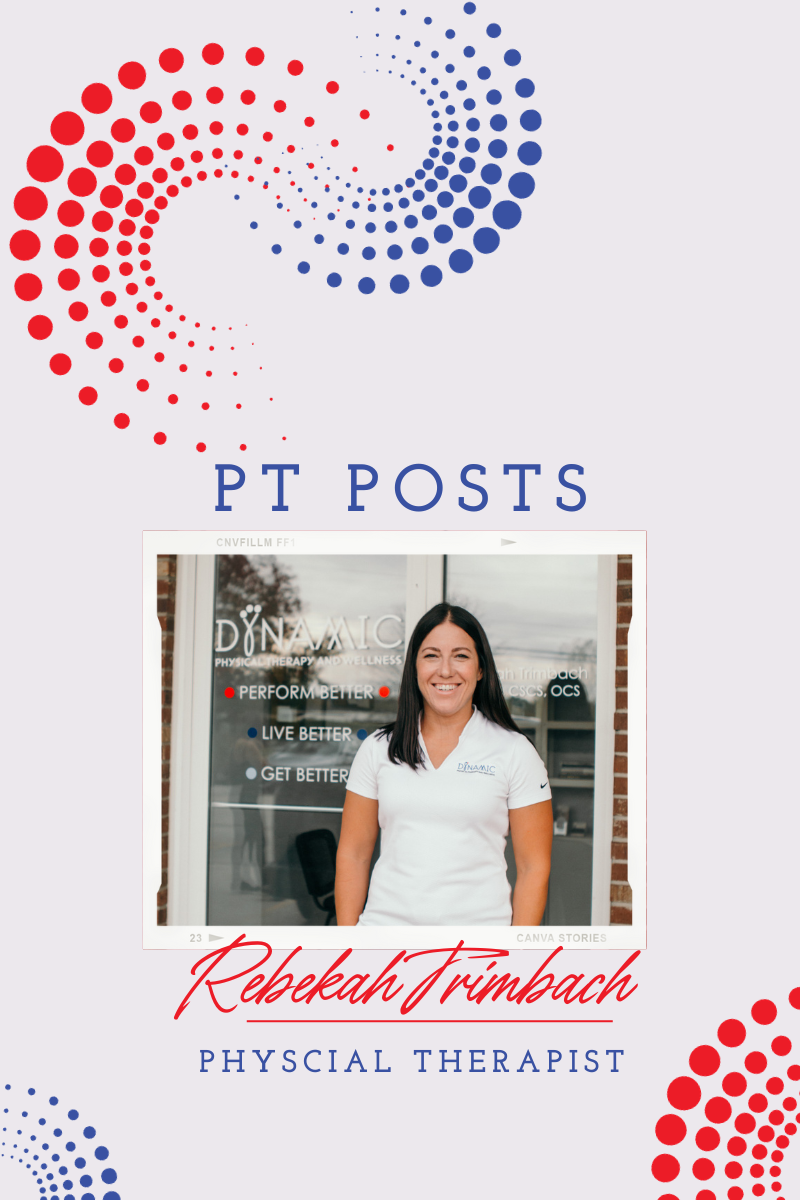PT Posts: More is Not Always Better
- Rebekah Trimbach

- Feb 27, 2024
- 3 min read
Updated: Mar 4
Exercise has many benefits. To name just a few, it can help boost your mood and it can help decrease your risk for some diseases. When you find a type of exercise you love (bonus points if it involves friends and a supportive community) it can be easy to feel like you want to go every day. So if it is so beneficial and if you’re having a great time, more has to be better, right?! Well, that’s not always the case.
While being active every day is important, performing the same type of exercise every day is not always ideal. Here are a few reasons why…
Risk of Overuse
When performing the same types of exercises on a regular basis we run the risk of developing an overuse injury. At first this may start as a tolerable “pain” or discomfort that you can work through. However, if not addressed early and if you continue performing the same types of exercises the “pain” or discomfort can develop into an injury that causes you to change or stop what you’re doing completely.
There may be some exercise variations in your day to day routines, especially in group fitness settings, there are still similarities in movements that can irritate structures of the body (i.e. bones, tendons, muscles, etc.). While you may not be performing squats every time you’re in the gym, performing lunges or split squats, as examples, work similar muscles and over time can irritate those areas if not done correctly and if you don’t take time to rest those tissues.
Rest Allows Your Muscles to Adapt and Build Strength
Performing new exercises and/or pushing yourself in a workout creates inflammation in our tissue. When done correctly, this is how we build strength and endurance. If we want our bodies to become more resilient we have to push ourselves to this point. Let’s think of this like the saying “one step forward, two steps back”… although I don’t like that negativity and like to flip it to say “one step back, two steps forward”. The inflammation that we create with the exercise drops us a step back, HOWEVER, when given enough rest, our bodies build us up two steps stronger, faster, etc. Now, this doesn’t mean 100%, stop doing all activity and sit on the couch “rest” but it does mean let’s change things up a bit and add some variability.
Variability Allows for More Optimal Fitness
We have multiple energy systems in our bodies that provide different types of “fuel” for the strength, power, and endurance required during different activities. For example, the energy needed to run a 5K is different from the energy needed to perform a max-effort deadlift. While I’m not going to get into the specifics here, if you only train one of these energy systems by doing the same type of exercise all the time, the others may perform sub-optimally. And when we think about optimal fitness and health, we want to strengthen as many of these systems as possible by performing different types of exercises at different intensities.
Now what does all of this look like? So many different factors play a part in making this decision. However, I typically recommend 2-3 “rest” days per week. This doesn’t mean sit around and do nothing, as mentioned before. It means “active recovery”. This may include some form of cardiovascular or aerobic exercise if you primarily focus on strength training. It may include adding some strength training if you primarily focus on aerobic exercise.
In general, here are some exercise guidelines from the US Department of Health and Human Services:
Adults should move more and sit less throughout the day.
For substantial health benefits adults should participate in 2.5-5 hours/week of moderate intensity exercises (walking, riding bike, hiking, etc.) OR 1.25-2.5 hours/week of vigorous exercise (running, cycling, swimming, tennis, etc.).
Additional health benefits are gained by engaging in physical activity beyond 5 hours of moderate-intensity physical activity a week.
Adults should also do muscle-strengthening activities of moderate or greater intensity 2 or more days a week.
My recommendation is to take these guidelines into consideration and adjust your program as needed. Still not sure what this should look like or what to do? Ask a trusted medical provider (physical therapist or primary care provider), fitness instructor, or coach for some individualized recommendations. I'm available at 513.204.9071 as well as office visits at TerraLuna, find my online schedule here.
Most importantly, find activities you love. Consistency is key and if you’re not having fun and loving what you’re doing, that’s hard to accomplish… also, life can be stressful enough so let’s add some fun.



Comments